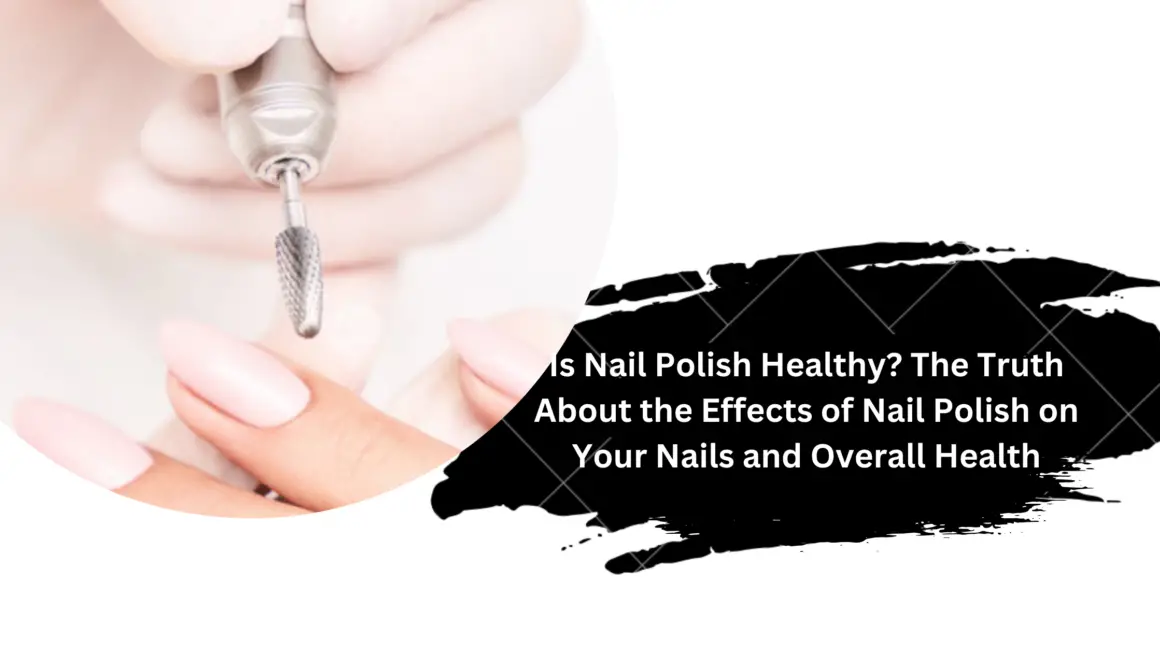Nail polish has been a staple in the beauty industry for decades. Women, and even some men, use it to enhance their appearance and express themselves through different colors and designs. However, there has been a growing concern about the safety of nail polish and its potential impact on health. The question remains: is nail polish healthy?
Nail polish is made up of a combination of chemicals that are designed to adhere to the nail and create a long-lasting finish. Some of these chemicals, such as formaldehyde, toluene, and dibutyl phthalate (DBP), have been linked to health concerns. Formaldehyde is a known carcinogen, while toluene has been linked to reproductive and developmental issues. DBP has been banned in some countries due to its potential toxicity. While these chemicals are present in small amounts in nail polish, there is still a concern about their cumulative effect over time.
Despite the potential health risks, there are also arguments in favor of nail polish. Some experts argue that the amount of exposure to these chemicals is minimal and not harmful. Additionally, many nail polish brands have started to produce “safer” formulas that are free of these potentially harmful chemicals. It is important to weigh the potential risks and benefits of using nail polish and make an informed decision based on personal preferences and concerns.
Health Impacts of Nail Polish
Nail polish is a popular cosmetic product used by many people to enhance the appearance of their nails. However, concerns have been raised about the potential health impacts of using nail polish. This section will examine the chemical composition of nail polish and its potential toxicity, as well as short-term and long-term health effects, and allergic reactions and sensitivities.
Chemical Composition and Toxicity
Nail polish typically contains a variety of chemicals, including solvents, resins, plasticizers, and pigments. Some of these chemicals have been linked to health problems such as cancer, reproductive issues, and developmental disorders. For example, formaldehyde, a common ingredient in nail polish, has been classified as a known human carcinogen by the International Agency for Research on Cancer. Other potentially harmful chemicals found in nail polish include toluene, dibutyl phthalate, and camphor.
Short-Term and Long-Term Health Effects
Short-term exposure to nail polish can cause symptoms such as headaches, dizziness, and nausea. Long-term exposure to the chemicals in nail polish may increase the risk of health problems such as cancer, respiratory issues, and liver and kidney damage. However, more research is needed to fully understand the long-term health effects of using nail polish.
Allergic Reactions and Sensitivities
Some people may experience allergic reactions or sensitivities to the chemicals in nail polish. Symptoms of an allergic reaction may include itching, redness, and swelling of the skin around the nail. In severe cases, an allergic reaction can cause anaphylaxis, a life-threatening allergic reaction that requires immediate medical attention. People with pre-existing allergies or sensitivities may be more likely to experience an allergic reaction to nail polish.
Overall, while nail polish may enhance the appearance of nails, it is important to be aware of the potential health impacts of using these products. It is recommended to use nail polish in a well-ventilated area, avoid prolonged exposure to the chemicals in nail polish, and consider using non-toxic or natural alternatives.
Safety and Regulations
Industry Standards for Nail Polish
The nail polish industry is regulated by the FDA in the United States and by similar agencies in other countries. Nail polish manufacturers are required to follow strict guidelines to ensure the safety of their products. These guidelines include limits on the use of certain chemicals such as formaldehyde, toluene, and phthalates, which have been linked to health concerns.
In addition to chemical limits, nail polish manufacturers must also comply with labeling requirements that provide information about ingredients, usage, and warnings. Consumers can use this information to make informed decisions about which products to use and how to use them safely.
Best Practices for Use and Removal
While nail polish is generally safe to use, there are some best practices that can help minimize potential risks. For example, it is important to use nail polish in a well-ventilated area to avoid inhaling fumes. It is also recommended to avoid using nail polish on children, especially young children, as their bodies may be more sensitive to the chemicals in nail polish.
When it comes to removal, it is important to avoid harsh chemicals such as acetone, which can dry out and damage nails and skin. Instead, consumers can use gentler alternatives such as non-acetone nail polish removers or natural options such as lemon juice or vinegar.
Overall, by following industry standards and best practices for use and removal, consumers can enjoy the benefits of nail polish while minimizing potential risks.





